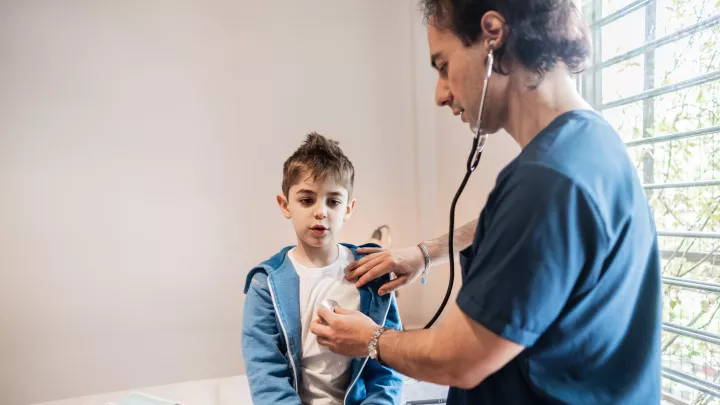
What is Liver Transplant Rejection?
Receiving a liver transplant means also living with the possibility of rejection. Transplant rejection occurs when the body’s immune system attacks the new organ. This risk is highest in the first year after the transplant, but rejection can happen at any time. To prevent this, patients take powerful medications to suppress their immune system and reduce inflammation. However, lowering immune defenses raises the risk of infections and certain cancers. Patients can, in part protect themselves by washing their hands to prevent infection, avoiding sun exposure and visiting a dermatologist. Immunosuppressant drugs also raise risks for other conditions including diabetes, high cholesterol and bone loss, as well as cause adrenal insufficiency (not producing enough cortisol, a hormone).
Who needs a liver transplant?
Children may need liver transplants due to acute liver failure, or from chronic liver disease complications. Causes for liver failure include congenital (present at birth) or acquired (developed later in life) disease. Biliary atresia, a congenital condition of the bile ducts that carry bile from the liver to the intestine, is the top reason for transplants. Other causes include metabolic liver diseases and liver tumors.

Types of rejection
There are two kinds of rejection:
- Acute rejection: when the body’s immune system attacks the liver after transplant. To detect it, doctors use biopsies (small samples of the liver). Treatment involves steroids and IV medication.
- Chronic rejection: This can occur over years and can harm the transplanted liver. While biopsies may appear normal, patients have underlying inflammation that often does not respond to immunosuppression.
To monitor patients, doctors look at blood tests for liver enzymes, but a biopsy is the best way to check for rejection. They perform regular surveillance biopsies in patients with “normal” lab results, detecting subclinical rejection in up to 20% of patients. “If we suspect rejection, we will adjust immunosuppressant doses as necessary,” says Juliet Emamaullee, MD, PhD, FRCSC, FACS, Research Director, Division of Abdominal Organ Transplantation.
Why care at a children’s hospital matters

Why go to a pediatric medical center? Because children are different than adults. A children’s hospital focuses on the unique needs of children, offering access to top pediatric specialists, leading-edge research and clinical trials. Children’s Hospital Los Angeles is the premier destination for children’s care in Los Angeles. CHLA’s 3-year liver transplantation survival rates are outstanding in the U.S. CHLA’s Liver Transplant Program has the highest liver transplant volume in the West. CHLA’s transplant surgeon team, led by Kambiz Etesami, MD, FACS, are experts in complex liver transplants, including multiple organs (such as liver and kidney transplants) and transfusion-free (bloodless) procedures. CHLA is also one of the few transplant centers in the U.S. that does technical variant grafts, in which a segment of an adult liver is transplanted into a child. Approximately one-third of CHLA transplanted livers come from living donors, such as family members, friends, or even a non-related adult. This can often mean shorter wait times and the possibility of a planned operation.
Need for immunosuppression varies

The need for immunosuppression varies widely among liver transplant patients. “The liver also has its inherent immune system,” says Dr. Emamaullee. Younger children tend to have more episodes of rejection. Children with autoimmune hepatitis, primary sclerosing cholangitis (PSC), or those who have been re-transplanted may need more immunosuppression. Up to 10% of liver transplant patients on immunosuppression develop steroid resistance and have recurrent episodes of rejection. “We have seen that children who receive a living donor liver section from their mothers have less acute cellular rejection,” says Rohit Kohli, MBBS, MS, Chief, Division of Gastroenterology, Hepatology and Nutrition. “Some 20% of patients tolerate transplanted livers without immunosuppression. So, we need to find out what is special about those 20%.”
“While achieving success without immunosuppression is the goal, the current standard of care does not condone withholding immunosuppression for any child, as the risks of rejection and damage to the liver are too great,” says Dr. Etesami. “The first step is researching the unique immune responses of an individual to a transplant.”
Future research
“We have very few drugs for immunosuppression, and they are used on all types of transplants,” says Dr. Emamaullee. “The drugs that we use to treat rejection have not changed within my entire lifetime.” CHLA’s Liver Transplant Program is researching a more personalized approach to treating rejection that is easier for young patients—and that they hope could be used for all organ transplants.
“We don’t yet have a way of distinguishing which patients are at risk for rejection, and who will require a low dose of immunosuppressants or don’t need immunosuppressants at all,” says Dr. Emamaullee. “Inflammation in liver transplant rejection is complex. Certain immune cells are present during different phases of rejection. We are investigating therapies that might detect these cell populations in the blood. In the future, we hope to avoid doing biopsies on our patients. We could check for the cells associated with rejection in the liver by doing a blood test.”
Living life post-transplant
Patients and their families can increase the odds that the transplant will be successful by:
- Eating a healthy diet (transplant patients are advised to eat certain foods and avoid others)
- Exercising as much as possible
- Consistently taking medications
- Contacting the medical team if they notice any changes
- Attending follow-up appointments
There is much about post-transplant life that patients cannot control. But they can lead as full and active a life as possible. This could mean going back to school, playing sports and seeing friends.


